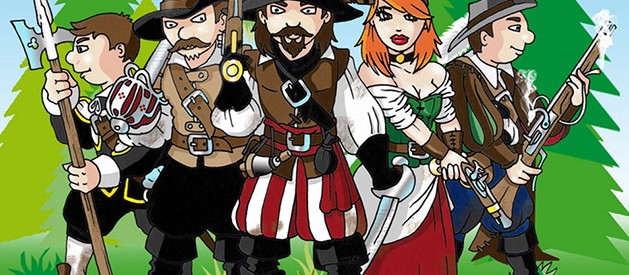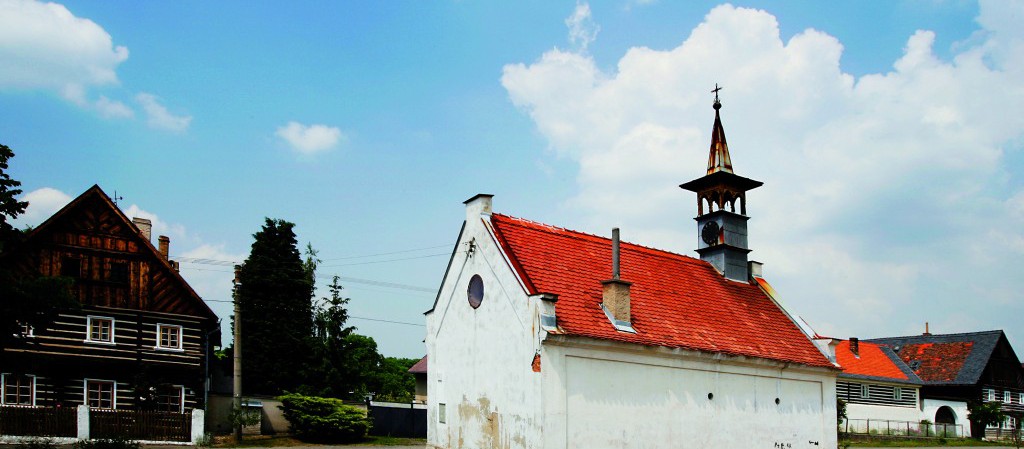
The educational journey of the robber Stetka
A nature trail around the surroundings of Štětí for the whole family, introducing the history and picturesque nature, industry and agriculture of Štetsko. The legendary robber Štětka and his four-member team are guiding the tour, giving information on a marked circuit starting from
In the old days of the Thirty Years' War, the robber Štětka was the master of the deep forests, fields and hillsides around the town of Štětí. Today, his home is the former Mordloch Cave, hidden away from people in the middle of the Stračen forests. Who knows him in the region. He protects the poor and honest, and justly punishes dishonesty and avarice. He has walked this land many times. He knows every road and footpath here.
During your adventurous journey with the robber Stetka you will come across educational boards that will tell you all about the history, nature, fauna and flora, industry and agriculture of the local region or visit the mythical cave Mordloch of the robber Stetka. You can also try out a discovery competition Following the footsteps of the robbers or robber geocaching.
Stops

Radouň, Jewish cemetery
JEWISH SETTLEMENT IN THE REGION OF SHTETL
Jewish settlements of the region of Stettin in the past
Before the Second World War, there were around two hundred Jewish inhabitants in Štětí and the municipalities of the Štětsko region. The tragic events of the war also affected the Jewish community in the region. Most of the Jewish inhabitants were deported to Nazi concentration camps.
Jewish community in Radouň
A relatively large Jewish community existed in Radouň (117 persons) and included also fellow Jews from the wider area (Hoštka, Štětí, Dubá). The original synagogue stood in house no. 94 on the road to Čakovice, it survived World War II but was demolished in the 1980s.
After the war, the life of the Jewish community in Radouň was not restored, the synagogue in the village, the cemetery ceremonial hall and the cemetery itself gradually decayed, although they were declared a cultural monument. Between 2003 and 2005 the cemetery was cleared of bushes and trees and is regularly chemically treated. The ceremonial hall is structurally secured, the dome has been repaired, and the outer walls have been bricked and plastered.
In the National Archives in Prague there is a plan of the cemetery (1905/1908, Alfred Pick) and the burial book of the "Chevry kadishi" in Radouň (1909-1939). A burial fraternity existed in Radouň as early as 1843. The burial book contains a total of 621 entries, the first dating from 1787, the last from 1938.
A lot of archival material on the history of the Radouň Jewish community has been preserved in the National Archives in Prague and in the SOA Litoměřice. Thus we learn that the Jewish mother of the writer Leo Perutz, Emma Oesterreicher-Perutz, came from Radouň.
Jewish community in Brocna
In the 19th century and at the beginning of the 20th century, a relatively large Jewish community lived in Brock. In the summer months, it was still multiplied by Jewish relatives and friends from Prague, who spent part of the hot days in the countryside in their summer apartment. For their religious devotions they used the prayer room, adapted from the original chapel in the middle of the village square.
One of the "Pentecostals" was also the Prague German-Jewish painter Emil Orlik, who stayed here with his uncle, the innkeeper Theodor Kuchler. The artist Emil Orlik (*1870 - †1932) lived in Prague after his studies in Munich. In 1900 and 1911-12 he travelled to Japan and the Far East. From 1905-1932 he was a professor at the School of Graphic and Book Arts in Berlin. His work was based on late impressionism. His engravings and coloured woodcuts are influenced by Art Nouveau and Japanese woodcuts.
During his stay in Brotzen in 1902 he created a coloured lithograph entitled "Sonntagsmorgen in Brotzen" (Sunday Morning in Brotzen). The picture shows a part of the timbered cottage No. 15 and three women in their then festive dress. The Chapel of St. Procopius in Brotzno apparently served at one time as a place of prayer for the large local Jewish community.
